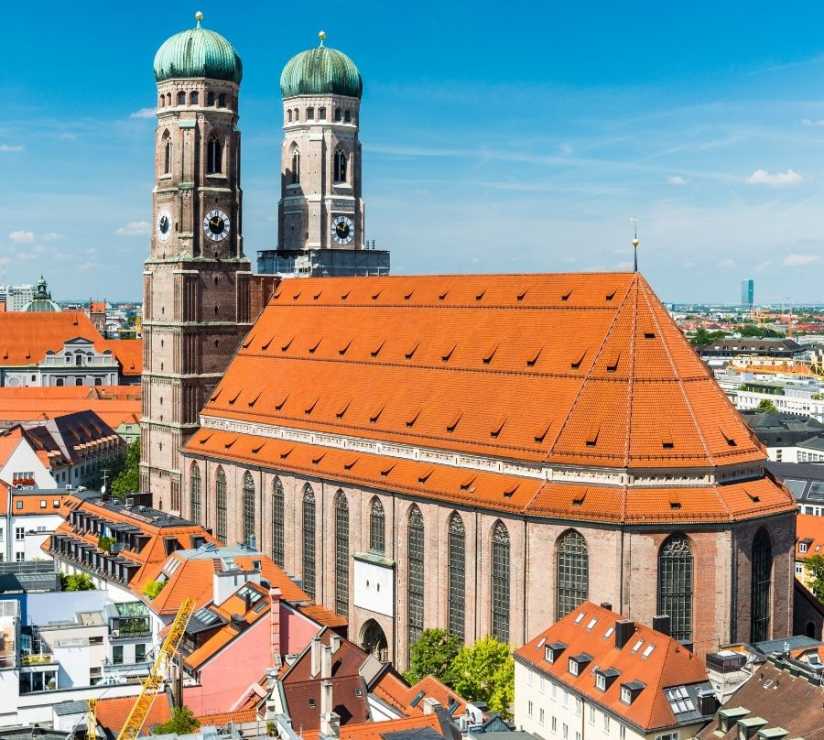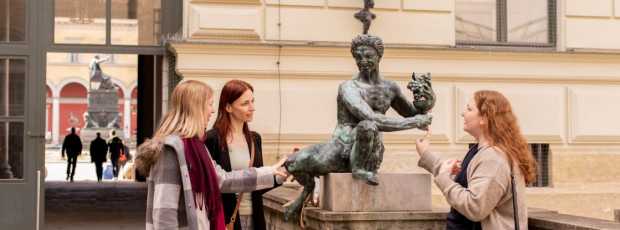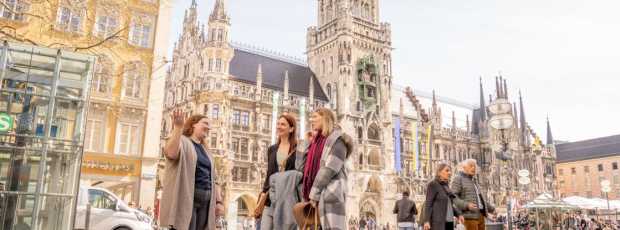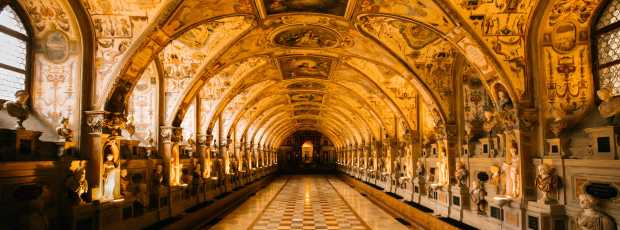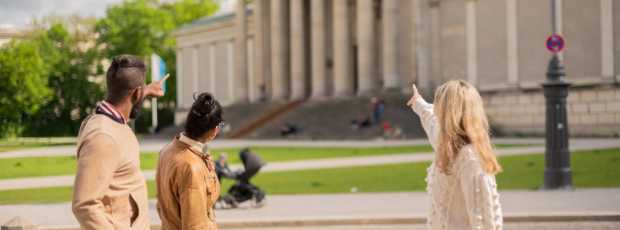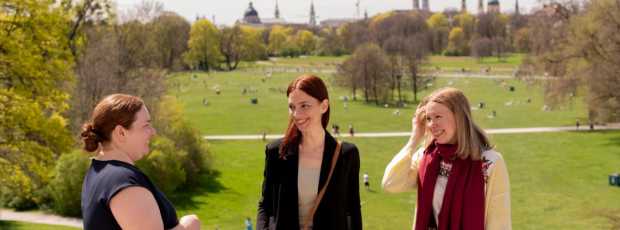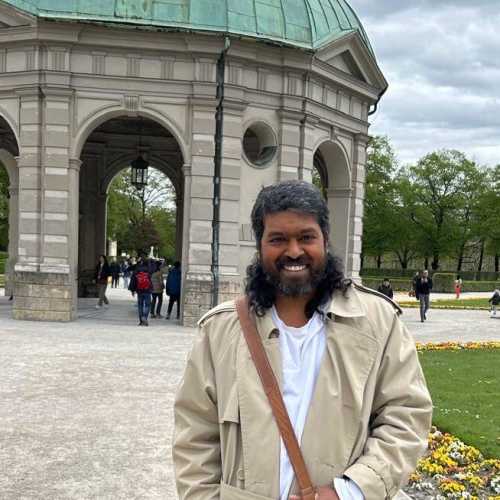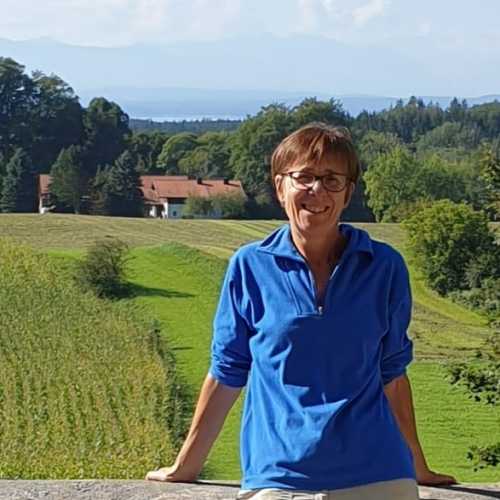Table Of Contents
- Getting Your Bearings: Central Munich and the Old Town
- Climbing High: Views from Alter Peter
- The English Garden: Not Actually English
- Beer Gardens: Where Munich's Soul Lives
- Olympic Legacy: More Than Just Sports
- Museums: World-Class Collections
- Royal Splendor: Nymphenburg Palace
- Opera and High Culture
- Football Fever: Allianz Arena
- Day Trips: Beyond Munich's Borders
- Seasonal Highlights: When to Visit
- Transportation: Getting Around
- Hidden Gems: Local Favorites
- Practical Tips: Making the Most of Your Visit
- Food Beyond Beer: Munich's Culinary Scene
- Conclusion: Munich's Enduring Appeal
Let me be straight with you, I've lived in Munich my entire life, and I'm tired of reading travel guides that make my city sound like some fairy-tale wonderland where lederhosen-clad locals dance around maypoles all day. Sure, we love our traditions, but there's so much more to discover here than the typical tourist traps. Munich is located in the heart of Bavaria, positioned as Germany's northerly city gateway to the Alps.
When people ask me about Munich, what to see, I don't immediately point them toward the obvious spots. Well, not only the obvious spots. This city has layers, like a good Bavarian onion, and yes, we take our onions seriously here. From world-class museums to hidden beer gardens where locals hang out, Munich offers something for anyone willing to look beyond the postcard-perfect facade.
Getting Your Bearings: Central Munich and the Old Town
![[IMAGE: Busy pedestrian zone in Munich's old town with historic buildings. Filename: munich-old-town-pedestrians.jpg]]()
Let's start where everyone starts, central Munich. The old town (Altstadt) is where you'll find most of the Munich things to see that make it onto every Instagram feed. But here's the thing: even though it's touristy, it's touristy for good reasons.
The heart of everything is Marienplatz, our central square that's been the city's main gathering place since 1158. I've watched countless visitors stand there with their necks craned back, mouths agape, staring at the new town hall (Neues Rathaus) like it's some sort of medieval miracle. And honestly? I get it.
![[IMAGE: Gothic facade of Munich's New Town Hall with intricate architectural details. Filename: neues-rathaus-facade.jpg]]()
The Neues Rathaus dominates Marienplatz square with its neo-Gothic towers and that famous Glockenspiel that performs its little dance show three times a day. Yes, it's a bit of a spectacle, and yes, tourists flock here like pigeons to breadcrumbs, but even I stop to watch sometimes. The 43-bell carillon tells the story of two events from Munich's history, and at 11 am, 12 pm, and 5 pm (plus 9 pm from March to October), the figures dance around while crowds gather below.
What most visitors don't realize is that the new town hall isn't actually that new, it was built between 1867 and 1909. The town hall we see today replaced an older structure, and local architects really went all-out trying to make it look authentically medieval. Mission accomplished, I'd say.
![[IMAGE: Tourists gathering in Marienplatz to watch the Glockenspiel performance. Filename: glockenspiel-crowd.jpg]]()
Climbing High: Views from Alter Peter
Right next to all this town hall grandeur stands alter peter (old peter), officially known as St. Peter's Church. This is where I send people who want to earn their city's rooftops views. The climb up the 299 steps isn't for the weak-kneed, but the viewing platform at the top offers one of the best panoramas in central Munich.
![[IMAGE: Aerial view of Munich from Alter Peter tower showing red rooftops. Filename: munich-aerial-view-alter-peter.jpg]]()
From up there, you can see across the entire old town to the Alps on clear days. Locals often joke that you can tell how long someone's been in Munich by whether they still bother climbing Old Peter. Guilty as charged, I haven't been up there in about five years.
The church itself dates back to the 11th century, making it older than the city itself. Alter peter survived the bombings of World War II, though it needed significant restoration. Today, it stands as one of Munich's most recognizable landmarks.
Looking for a private city experience in Munich?
Explore the city with a local who plans a private day just for you; no groups, no scripts.
The English Garden: Not Actually English
![[IMAGE: Sunny day in the Englischer Garten with people relaxing on grass. Filename: englischer-garten-relaxing.jpg]]()
Now, let's talk about something that genuinely makes Munich special, the Englischer Garten (English Garden). At 910 acres, it's one of the world's largest urban parks, bigger than New York's Central Park. Despite the name, it's thoroughly Bavarian in spirit.
The English Garden was created in 1789 by Sir Benjamin Thompson (later Count Rumford), an American-born physicist who served the Bavarian government. He designed it in the English landscape style, hence the name, but over the centuries it's become quintessentially Munich.
![[IMAGE: The Chinese Tower in the English Garden surrounded by trees. Filename:tower-englischer-garten.jpg]]()
The park's most famous landmark is the Chinese Tower (Chinesischer Turm), a 25-meter-tall pagoda that serves as the centerpiece for one of Munich's most popular beer garden spots. Built in 1789 and rebuilt after war damage, it hosts traditional Bavarian folk music performances during the warmer months.
But here's where it gets interesting: the English Garden is also home to one of the world's most unusual urban surf spots. The Eisbach wave near the park's southern entrance creates a standing wave where surfers ride year-round, even in winter. Watching wetsuit-clad surfers navigate the chilly waters while office workers eat lunch nearby perfectly captures Munich's ability to blend the unexpected with the everyday.
![[IMAGE: Surfers riding the Eisbach wave in the English Garden. Filename: eisbach-wave-surfers.jpg]]()
The Japanese Tea House: A Peaceful Surprise
Deeper in the English Garden, you'll find the Japanese tea house, a gift from Munich's sister city, Sapporo. Built in 1972 for the Olympics, it offers traditional tea ceremonies during warmer months. The tea house is located on a small island in the park's Schwabinger Bach stream, creating a serene setting that feels worlds away from the busy city center. The juxtaposition of Bavarian beer garden culture with Japanese tea ceremony tradition somehow works perfectly here.
![[IMAGE: Traditional Japanese tea house in the English Garden with pond. Filename:tea-house-munich.jpg]]()
Beer Gardens: Where Munich's Soul Lives
Speaking of beer garden culture, let me set the record straight about something. Beer gardens aren't tourist attractions; they're institutions. They're where locals go to decompress, argue about football, and consume impressive quantities of beer and pretzels.
![[IMAGE: Traditional Bavarian beer garden with long wooden tables under chestnut trees. Filename: traditional-beer-garden.jpg]]()
The beer garden at the Chinese Tower accommodates about 7,000 people, making it one of Munich's largest. But size isn't everything. For a more authentic experience, I prefer smaller beer garden spots where you're more likely to sit next to actual Munich residents rather than tour groups.
Beer garden etiquette is simple: if there's a tablecloth, you need to order food from the restaurant. If the tables are bare wood, you can bring your own food, but must buy drinks. And yes, you can absolutely bring your lunch to a beer garden, it's not considered rude; it's tradition.
![[IMAGE: Friends sharing a meal at a beer garden table under trees. Filename: beer-garden-friends-meal.jpg]]()
The beer garden season officially runs from May to October, though some hardy souls will sit outside with a beer even when it's snowing. During peak warmer months, finding a seat at popular beer garden locations requires either luck or arriving early.
Augustiner-Bräu: The Local's Choice
![[IMAGE: Traditional Augustiner beer hall interior with long wooden tables. Filename: augustiner-beer-hall.jpg]]()
While we're on the subject of beer, let's talk about beer hall versus beer garden. A beer hall is indoors, operates year-round, and typically serves full meals alongside beer. The most famous is the Hofbräuhaus, which I avoid like the plague during tourist season. Instead, try Augustiner-Bräu, Munich's oldest brewery, where you'll find more locals than lederhosen. The brewery is located near the main train station, making it easily accessible for visitors.
Augustiner has been brewing beer in Munich since 1328, making it one of the world's oldest breweries still in operation. Their beer hall near the train station maintains an authentic atmosphere where conversation flows as freely as the beer.
Olympic Legacy: More Than Just Sports
![[IMAGE: Munich's Olympic Stadium with its distinctive tent-like roof structure. Filename: olympic-stadium-architecture.jpg]]()
The 1972 Olympics left Munich with Olympic park, a sprawling complex that's become one of the city's most distinctive areas. The Olympic stadium with its revolutionary tensioned roof design still looks futuristic more than 50 years later.
Olympic park serves as both historical monument and active recreational space. The stadium hosts concerts and sporting events, while the park itself offers everything from guided tours to swimming facilities. The Olympic Tower provides another excellent viewing platform for those who prefer elevators to stair climbing.
![[IMAGE: View of Munich from Olympic Tower showing the city sprawling to the Alps. Filename: olympic-tower-view.jpg]]()
During summer, Olympic park becomes a massive outdoor concert venue. I've seen everyone from Metallica to Madonna perform here, and the atmosphere is always electric. The park also contains several museums, including the BMW Museum and BMW Welt, where you can explore automotive history and see future concept cars.
BMW Welt: Engineering Meets Art
![[IMAGE: Modern BMW Welt building with its distinctive cone-shaped architecture. Filename: bmw-welt-architecture.jpg]]()
BMW Welt, adjacent to Olympic park, showcases Bavarian engineering prowess in a building that's itself an architectural marvel. The twisted cone structure houses new car deliveries, exhibitions, and events. It's free to explore and offers insight into Germany's automotive culture.
What if your day in Munich was planned by someone who knows it — and you?
City Unscripted matches you with a local host who creates a private experience based on your interests, not a set route.
Museums: World-Class Collections
![[IMAGE: Exterior of the Deutsches Museum on Museum Island. Filename: deutsches-museum-exterior.jpg]]()
Munich's museum scene is one of the globes most impressive, though locals sometimes take it for granted. The Deutsches Museum on Museum Island is the world's largest science and technology museum, with everything from historic aircraft to interactive physics demonstrations. The museum is located on an island in the Isar River, connected to the mainland by bridges that make it feel like a separate world dedicated to scientific discovery.
I'll be honest, I didn't appreciate the Deutsches museum until I had to show visiting relatives around. Watching a eight-year-old nephew's eyes light up at the electricity demonstrations reminded me why this place is considered one of the great museum experiences in the world.
![[IMAGE: Interactive science exhibit inside the Deutsches Museum. Filename: deutsches-museum-exhibit.jpg]]()
The Museum covers 50,000 square meters and houses more than 100,000 objects. Plan a full day if you want to see everything, though most visitors focus on specific sections. The aviation exhibit is particularly impressive, with aircraft spanning from early flying machines to modern jets. The Hercules hall within the museum showcases historical aircraft and space technology in an impressive hangar-like setting.
Art Museums: Alte Pinakothek and Beyond
![[IMAGE: Classical facade of the Alte Pinakothek art museum. Filename: alte-pinakothek-facade.jpg]]()
For art lovers, the Alte Pinakothek houses one of the most important collections of European paintings in the world from the 14th to 18th centuries. Works by Dürer, Rubens, and Rembrandt fill galleries in a building that's itself a masterpiece of museum architecture.
The modern painting collection lives at the Pinakothek der Moderne, which covers contemporary art, design, and architecture. Together with the Neue Pinakothek (currently closed for renovation), these museum buildings form Munich's art district.
![[IMAGE: Gallery interior of Alte Pinakothek with classical paintings on walls. Filename: alte-pinakothek-gallery.jpg]]()
What I love about Munich's art museum scene is how accessible it is. Most offer free admission on certain days, and all provide excellent guided tours in multiple languages. Even if art isn't typically your thing, these collections offer fascinating glimpses into European cultural history.
Royal Splendor: Nymphenburg Palace
![[IMAGE: Baroque facade of Nymphenburg Palace with formal gardens. Filename: nymphenburg-palace-facade.jpg]]()
Nymphenburg palace (schloss nymphenburg) serves as Munich's Versailles, a massive Baroque summer residence built for elector ferdinand maria and his wife in the 17th century. The palace complex stretches for over 600 meters and includes formal gardens, pavilions, and collections spanning centuries of Bavarian state history.
King ludwig II, Bavaria's "fairy-tale king," was born here in 1845. The palace's Hall of Beauty contains 36 portraits of beautiful women from all social classes, commissioned by King Ludwig I (not to be confused with his grandson, Ludwig II of Neuschwanstein castle fame).
![[IMAGE: Ornate interior of Nymphenburg Palace showing baroque decorations. Filename: nymphenburg-palace-interior.jpg]]()
The palace park is free to explore and offers peaceful walking paths, small lakes, and hidden pavilions. During winter, when tourist crowds thin out, it becomes a magical place for quiet contemplation. The royal garden transforms dramatically with the seasons, spring brings blooming flowers, summer offers shaded walks, autumn displays colorful foliage, and winter creates a serene, almost mystical atmosphere.
Hidden Gem: The Amalienburg
![[IMAGE: Rococo hunting lodge Amalienburg in Nymphenburg park. Filename: amalienburg-hunting-lodge.jpg]]()
Within the Nymphenburg palace grounds sits the Amalienburg, a small Rococo hunting lodge that many visitors miss. This magnificent buildings represents one of the finest examples of Rococo architecture, with its famous Hall of Mirrors rivaling anything at Versailles.
Opera and High Culture
![[IMAGE: Elegant facade of the Bavarian State Opera house at night. Filename: bavarian-state-opera-night.jpg]]()
Munich's cultural scene extends well beyond Museum visits. The Bavarian state opera house at Max Joseph Platz stands as one of the leading opera house venues in the world. Even if opera isn't your usual entertainment, the building itself deserves attention for its neoclassical architecture and rich history.
It was completely rebuilt after World War II, reopening in 1963 with a performance of Wagner's "Die Meistersinger von Nürnberg", appropriately, since Wagner premiered several works here. Today, the state opera maintains its reputation as one of the world's premier opera house venues.
![[IMAGE: Grand interior of the Bavarian State Opera with red velvet seats. Filename: interior-of-opera.jpg]]()
Max Joseph Platz, the square in front of the opera house, also houses the Residenz, the former royal palace of Bavaria's Wittelsbach monarchs. The Residenz Museum complex includes the Treasury, with its collection of crowns, jewelry, and religious artifacts dating back 1,000 years.
Tip
We match you with the right host, not just any guide.Want to experience the real Munich with someone who lives there?
A fully private experience, planned and led by a local host who tailors the day to you
Football Fever: Allianz Arena
![[IMAGE: Illuminated Allianz Arena stadium at dusk with red lighting. Filename: allianz-arena-night.jpg]]()
No discussion of what sights to see would be complete without mentioning the Allianz Arena, home to FC Bayern Munich. This magnificent buildings example of modern stadium architecture can change colors thanks to its inflatable exterior panels, red for Bayern Munich, blue for TSV 1860 München, or white for the German national team.
The Allianz Arena opened in 2005 and holds 75,000 spectators. Even non-football fans appreciate the stadium's striking architecture and the tour options that include access to the players' tunnel, locker rooms, and press conference areas.
![[IMAGE: Interior view of Allianz Arena during a football match. Filename: allianz-arena-match.jpg]]()
Getting to the Allianz Arena requires a short trip on the u Bahn (U6 line to Fröttmaning), but the journey is part of the experience on match days when thousands of fans make the pilgrimage wearing Bayern's colors.
Day Trips: Beyond Munich's Borders
![[IMAGE: Neuschwanstein Castle perched on a hilltop surrounded by forest. Filename: neuschwanstein-castle-landscape.jpg]]()
While Munich offers plenty to keep you busy, some of Germany's most famous attractions lie within day trip distance. Neuschwanstein castle, King Ludwig II's fairy-tale creation, sits about two hours south by train and bus. Yes, it's crowded, and yes, it's touristy, but it's also genuinely spectacular.
Neuschwanstein Castle inspired Disney's Sleeping Beauty Castle and represents the pinnacle of 19th-century Romantic architecture. King Ludwig II commissioned it as a retreat and homage to Richard Wagner, though he only spent 172 days there before his mysterious death in 1886.
![[IMAGE: Interior throne room of Neuschwanstein Castle with ornate decorations. Filename: neuschwanstein-interior.jpg]]()
The tour of Neuschwanstein castle takes about 30 minutes and covers 14 rooms, including the artificial grotto and the throne room with its Greek temple-inspired design. Book tickets in advance, especially during peak season, as they often sell out.
Other worthwhile day trip options include Salzburg (Mozart's birthplace), the Bavarian Forest, or the Romantic Road's medieval towns. Each offers a different perspective on Bavaria and Germany's rich cultural landscape.
Seasonal Highlights: When to Visit
![[IMAGE: Munich's Christmas market with wooden stalls and holiday decorations. Filename: munich-christmas-market.jpg]]()
Munich transforms dramatically with the seasons, and knowing when to visit can enhance your experience significantly. Summer brings beer garden season, outdoor concerts, and perfect weather for exploring Olympic Park or the English Garden.
Winter has its magic, particularly during the Christmas market season. Munich hosts several Christmas markets, with the main one at Marienplatz featuring traditional crafts, mulled wine, and enough gemütlichkeit to warm even the coldest day.
![[IMAGE: People enjoying mulled wine at Munich's Christmas market. Filename: christmas-market-mulled-wine.jpg]]()
Oktoberfest, of course, dominates late September and early October. This world famous festival attracts millions of visitors who come to experience authentic Bavarian culture, complete with traditional beer, music, and food. But Oktoberfest is just one part of Munich's festival calendar, spring brings the Frühlingsfest, summer offers countless outdoor events, and winter features various cultural festivals.
Oktoberfest: Beyond the Stereotypes
![[IMAGE: Traditional Oktoberfest tent with long tables and festive atmosphere. Filename: oktoberfest-tent-interior.jpg]]()
Let me address Oktoberfest honestly. Yes, it's become commercialized. Yes, it attracts rowdy tourists who think it's just an excuse to drink beer and act foolishly. But Oktoberfest also preserves genuine Bavarian traditions and brings locals together in ways that few other events manage.
The festival features 14 large tents, each with its own personality and clientele. Locals have their preferences, Augustiner-Festhalle for a more traditional atmosphere, Hofbräu-Festzelt for international crowds, or Schottenhamel for the official Oktoberfest opening ceremony.
![[IMAGE: Traditional Bavarian band performing at Oktoberfest. Filename: oktoberfest-traditional-band.jpg]]()
Oktoberfest beer comes exclusively from Munich breweries and follows special brewing regulations. The festival also showcases Bavarian cuisine, traditional music, and folk dancing. While the crowds can be overwhelming, experiencing Oktoberfest at least once offers insight into Bavarian culture that you won't find anywhere else.
Ready to plan your perfect day in Munich?
Start your experienceTransportation: Getting Around
![[IMAGE: Modern U-Bahn train at a Munich subway station. Filename: munich-u-bahn-station.jpg]]()
Munich's public transportation system makes exploring the city straightforward. The u Bahn (subway) and s Bahn (suburban rail) connect all major attractions and districts efficiently. A day ticket covers all public transport within the city and costs less than parking in most central areas.
The u Bahn system includes eight lines that serve the city center and suburbs. Most Munich sites to see are accessible via u Bahn, including Marienplatz square (U3/U6), Olympic park (U3), and the Allianz Arena (U6).
![[IMAGE: S-Bahn train at Munich Central Station platform. Filename: s-bahn-central-station.jpg]]()
For longer distances or day trip adventures, the S-Bahn connects Munich with surrounding towns and regions. The system operates on an honor system; you validate your ticket, but won't encounter turnstiles. Don't risk traveling without a valid ticket; inspectors are common and fines are substantial.
Hidden Gems: Local Favorites
![[IMAGE: Quiet courtyard in Munich's old town with traditional architecture. Filename: munich-hidden-courtyard.jpg]]()
Beyond the obvious the sights to see, the city holds countless smaller treasures that most guided tours skip entirely. The Glyptothek, a neoclassical museum dedicated to ancient sculpture, houses one of the world's finest collections of Greek and Roman art in a building that looks like a Greek temple. The architecture rivals Italy's famous Loggia Dei Lanzi in Florence for classical elegance, though Munich's version focuses on museum functions rather than public display.
Locals also frequent the Isar River banks, particularly the areas south of the city center, where you can walk, cycle, or simply relax by the water. The Isar River offers surprising natural beauty within an urban environment, with clear Alpine water and plenty of green space.
![[IMAGE: People relaxing by the Isar River in Munich. Filename: isar-river-relaxing.jpg]]()
The Maximilianstrasse area around Max Joseph Platz contains some of Munich's most exclusive shopping and dining, but also features beautiful architecture and quieter street scenes away from the tourist crowds.
For coffee culture, Munich has evolved far beyond traditional cafés. The city now boasts excellent third-wave coffee shops alongside traditional Konditorei (pastry shops) that have served the same families for generations.
![[IMAGE: Cozy Munich coffee shop with traditional and modern elements. Filename: munich-coffee-shop.jpg]]()
Practical Tips: Making the Most of Your Visit
![[IMAGE: Tourist information booth in Munich with helpful staff. Filename: munich-tourist-information.jpg]]()
Munich experiences vary greatly depending on preparation and expectations. The city rewards visitors who do a bit of homework and approach it with an open mind rather than rigid itineraries.
Free activities abound for budget-conscious travelers. Many museums offer free admission days, the English Garden costs nothing to explore, and walking through the old town provides hours of entertainment without spending money.
Guided tours can add valuable context, but choose carefully. The best tour guides provide historical background and local insights rather than just pointing out obvious landmarks. I recommend guided tours for specialized interests, brewery tour experiences, art museum tours, or historical walks that explore Munich's complex 20th-century history.
![[IMAGE: Group of tourists on a guided walking tour in Munich. Filename: guided-tour-group.jpg]]()
Visit planning should account for crowds and seasonal variations. Summer weekends bring massive crowds to popular attractions, while winter weekdays offer more intimate experiences. Many attractions offer online booking, which I strongly recommend for popular museum visits and brewery tour experiences.
Food Beyond Beer: Munich's Culinary Scene
![[IMAGE: Traditional Bavarian meal with sausages, sauerkraut, and pretzels. Filename: bavarian-traditional-meal.jpg]]()
While beer dominates Munich's culinary reputation, the city's food scene extends far beyond beer hall fare. Traditional Bavarian cuisine emphasizes hearty, seasonal ingredients, such as pork, potatoes, cabbage, and plenty of herbs and spices.
Locals have their favorite spots for different occasions. For business lunches, they might choose refined restaurants near Max Joseph Platz. For casual dinners, neighborhood gastropubs offer authentic regional cuisine. And for late-night food, currywurst stands and döner kebab shops provide fuel for Munich's nightlife.
![IMAGE: Modern Munich restaurant with contemporary Bavarian cuisine. Filename: modern-bavarian-restaurant.jpg]]()
Munich's markets also deserve attention. The Viktualienmarkt near Marienplatz has operated as a food market since 1807, offering everything from fresh produce to prepared foods. It's where locals shop for quality ingredients and grab quick lunches.
Conclusion: Munich's Enduring Appeal
![[IMAGE: Sunset view over Munich with church spires and modern buildings. Filename: munich-sunset-skyline.jpg]]()
After three decades of living here, I still discover new aspects of Munich regularly. The city balances tradition with innovation, offering world famous attractions alongside hidden corners where locals gather away from tourist crowds.
What makes Munich special isn't any single attraction, it's the combination of magnificent buildings, world -class museum collections, vibrant beer garden culture, and a quality of life that locals and visitors alike appreciate. Whether you spend a weekend sampling beer gardens or a week exploring every museum, Munich rewards curiosity and openness to experience.
![IMAGE: Munich locals and tourists mingling in a beer garden at golden hour. Filename: beer-garden-golden-hour.jpg]]()
The highlights I've shared represent a lifetime of living here, but they're just starting points for your own exploration. Munich is one of the world's great cities precisely because it doesn't try too hard to impress, ,it simply offers authentic experiences for those willing to look beyond the surface.
So whether you're planning your first visit or returning to discover something new, remember that the best Munich experiences happen when you balance must-do in Munich activities with spontaneous discoveries. Prost to that!
![[IMAGE: Final panoramic view of Munich at night with illuminated landmarks. Filename: munich-night-panorama.jpg]]()
What if your day in Munich was planned by someone who knows it — and you?
City Unscripted matches you with a local host who creates a private experience based on your interests, not a set route.
Want to experience the real Munich with someone who lives there?
A fully private experience, planned and led by a local host who tailors the day to you
